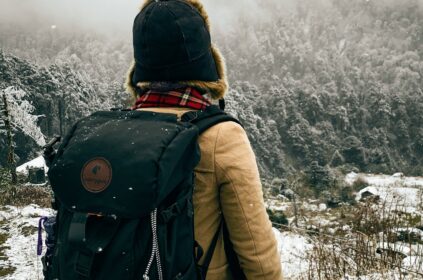As an avid hiker, you’re no stranger to the great outdoors. You’ve spent countless hours trekking through trails, taking in the breathtaking views, and pushing your body to its limits. But even the most seasoned hikers can fall victim to one of the most pesky and painful hiking companions: blisters.
A blister is a common occurrence when hiking, especially when wearing new or ill-fitting shoes, or when hiking in extreme weather conditions. But don’t let the thought of blisters deter you from hitting the trails. With the right knowledge and treatment, you can minimize the discomfort and get back to enjoying the great outdoors.
Causes of Blisters While Hiking
Before we dive into the treatment, it’s essential to understand what causes blisters while hiking. Here are some common culprits:
- Friction: When your skin rubs against the shoe or sock, it can cause friction, leading to blisters.
- Moisture: Excessive sweating or wet conditions can cause blisters to form.
- Poor Fitting Shoes: Shoes that don’t fit properly can cause blisters, especially if they’re too tight or too loose.
- Inadequate Socks: Wearing socks that are too tight or too loose can cause blisters.
- Weather Conditions: Extreme temperatures, humidity, or wind can cause blisters to form.
Treating Blisters While Hiking
Now that we’ve covered the causes, let’s dive into the treatment. Here are some steps to follow:
- Stop and Assess: If you notice a blister forming, stop and assess the situation. Don’t continue hiking and risk making the blister worse.
- Clean and Dry: Clean the blister with soap and water, and pat it dry with a clean towel. This will help prevent infection and reduce discomfort.
- Apply a Topical Ointment: Apply a topical ointment, such as aloe vera or petroleum jelly, to the blister to reduce friction and promote healing.
- Cover the Blister: Cover the blister with a bandage or blister pad to protect it from further irritation and friction.
- Elevate and Rest: Elevate your foot and rest for a while to reduce swelling and promote healing.
- Monitor and Change: Monitor the blister’s progress and change the dressing as needed. If the blister becomes infected or shows signs of infection (redness, swelling, increased pain), seek medical attention.
Preventing Blisters While Hiking
Prevention is always better than treatment. Here are some tips to prevent blisters while hiking:
- Break in Your Shoes: Break in your shoes before hitting the trails to prevent blisters.
- Wear Comfortable Socks: Wear comfortable, breathable socks that fit well.
- Use Blister Prevention Products: Use products like blister prevention strips or blister shields to reduce friction.
- Wear Moisture-Wicking Clothing: Wear moisture-wicking clothing to keep your skin dry and reduce friction.
- Take Breaks: Take regular breaks to rest and stretch your feet.
Conclusion
Treating blisters while hiking requires a combination of knowledge, preparation, and patience. By understanding the causes of blisters, knowing how to treat them, and taking preventative measures, you can minimize the discomfort and get back to enjoying the great outdoors. Remember to stop, assess, clean, and dry the blister, apply a topical ointment, cover it, elevate and rest, and monitor its progress. With the right treatment and prevention strategies, you can conquer the trails and enjoy the beauty of nature without the pesky presence of blisters.









